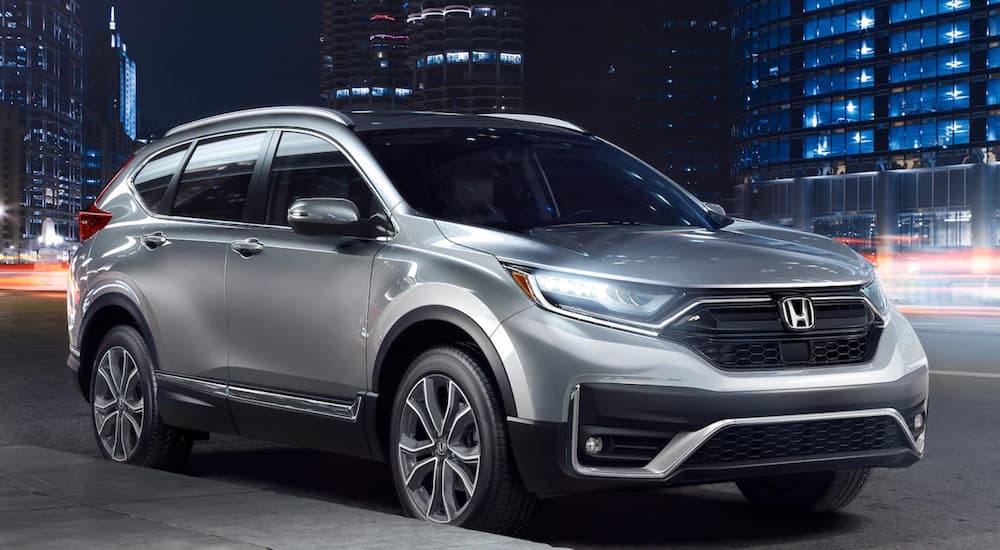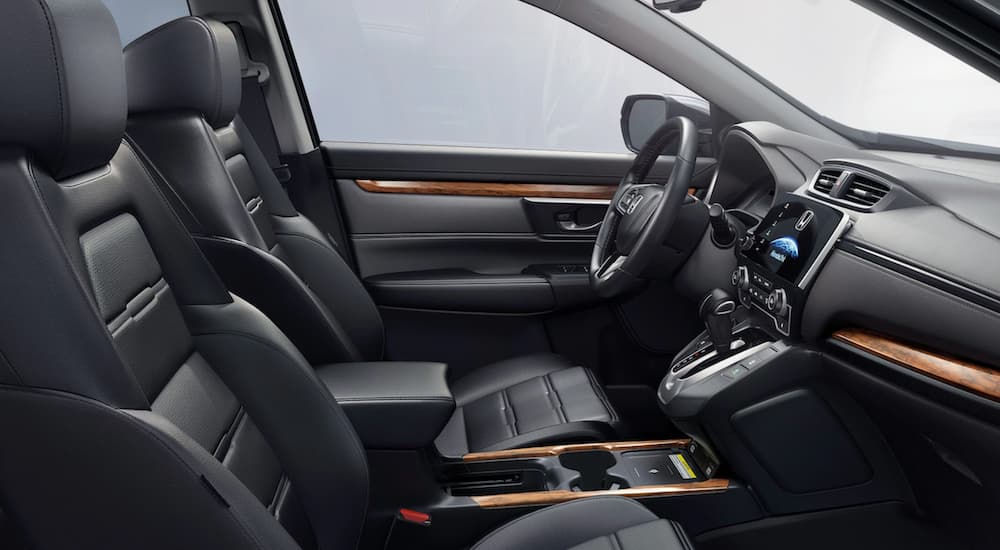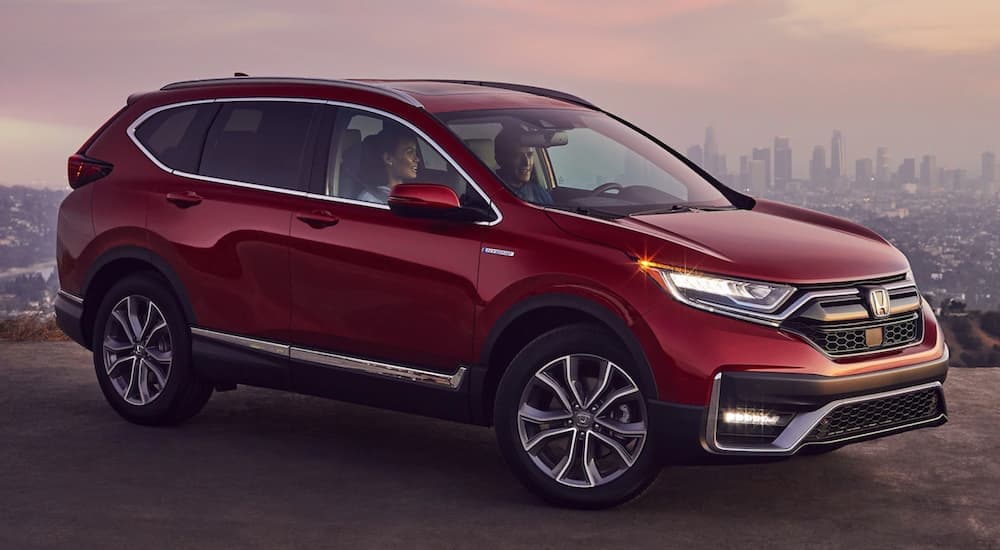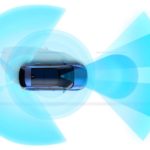A quick trip to your local car dealer and you’ll discover that Honda offers one of the most impressive safety suites in the industry. Known as the Honda Sensing suite, this toolkit is designed to engineer confidence behind the wheel. Honda Sensing equips the new Honda lineup with a variety of tools to extend your visibility, improve your focus, and actively minimize the potential for collisions.
But, who sets the standards for what goes into the safety suite? And, how has it evolved since its debut in 2015?
Federal Safety Standards: A Brief History of Auto Safety
Whether you’re shopping for a 2012 Honda Civic or a 2021 Honda CR-V, each model abides by a set of rules, known as the Federal Motor Vehicle Safety Standards. These rules specify how vehicles are built and designed, as well as how they perform. These standards are nothing new in the automotive industry. After all, America saw the first official seat belt patent in 1885—by New York native Edward J. Claghorn.
The evolution of transportation from the trusty steed to the automobile activated new safety concerns. However, auto brands of the time were slow to oblige. Believe it or not, the seat belt didn’t make its way into American-made cars until the 1950s—around the same time that airbags were invented.
By the 1960s, Congress established the Department of Transportation to “ensure a fast, safe, efficient, accessible, and convenient transportation system.” This institution prompted the first official Federal Safety Standards in 1968 and formed the National Highway Traffic Safety Administration in 1970.
While the Federal Safety Standards regulate how vehicles are built and how they perform, the NHTSA is tasked with automotive safety. This organization sets and enforces safety standards throughout the industry, investigates safety defects, and provides feedback to automakers and consumers. Safety feedback is vital for consumers, as NHTSA tests every single vehicle in the industry—then scores them based on stringent crash tests and other standards. The higher the score, the better. For example, both the 2012 Honda Civic and 2021 Honda CR-V earned five-star overall safety ratings—the highest score possible.
Honda: A Pioneer in Safety
Honda’s commitment to pioneering advancements in automotive safety is undeniable. Just look at models like the 2006 Acura RL, within Honda’s luxury and performance division. The 2006 Acura RL marked a first in automotive history, as Honda outfitted the model with an automatic emergency braking system. This was the first time that this feature was ever offered in a consumer vehicle. It forever changed the American automotive landscape—but Honda didn’t stop there.
Along with introducing automatic emergency braking in the Acura RL, Honda debuted its Collision Mitigation Braking System (CMBS). Tasked with detecting and mitigating collisions, this tool laid the foundation for Honda’s move toward a comprehensive suite of safety features. Over a decade later, this suite finally made its debut in 2015 as Honda Sensing.
Honda Sensing: Past to Present
The 2015 Honda CR-V introduced American drivers to the Honda Sensing suite. At the time, the suite’s design was revolutionary; its monocular camera and millimeter-wave radar monitored the CR-V’s position on the roadway and sensed traffic from various angles. The 2015 CR-V’s suite included Honda’s proven Collision Mitigation Braking System, as well as Forward Collision Warning, Lane Departure Warning, a Lane Keeping Assist System, Adaptive Cruise Control, and Honda LaneWatch.
Always at the helm of innovation, Honda made vast improvements to the suite and its operability in 2022. Their aim was to give drivers more immediate feedback, thereby allowing for quicker response times and increased chances of avoiding a collision. To achieve this, Honda replaced the monocular camera and radar with a single-camera system that enabled a wider field of detection. Adding in a faster processor and updated software, the newly updated system can differentiate between vehicles, pedestrians, cyclists, traffic signs, road lines, etc. within seconds.
How does this update impact the tools in the suite? It makes them more intuitive and gives you a longer window to respond in situations where every second counts. The updated suite integrates Forward Collision Warning with the Collision Mitigation System, both of which work to monitor the road ahead for potential hazards and alert you when necessary. If you fail to respond to alerts, the system will automatically apply the brakes and bring the Honda to a controlled stop.
Tools like Adaptive Cruise Control and Low-Speed Follow are also improved—and dramatically reduce the stress of driving in traffic. Low-Speed Follow extends the versatility of Adaptive Cruise Control in stop-and-go traffic, automatically reducing the Honda’s cruising speed or bringing the vehicle to a stop based on the flow of traffic.
Big Things Are Coming: Honda Sensing 360
In late 2021, Honda unveiled the all-new Honda Sensing 360 suite, the next iteration of this automaker’s remarkable safety and driver-assist toolkit. The suite will make its official debut in China in 2022 and will set a new standard across Honda’s lineup in America by 2030. The new, refined suite embodies their commitment to a future with zero crashes and zero fatalities.
So, what makes Honda Sensing 360 so impressive? Living up to its name, Honda Sensing 360 extends the automaker’s industry-leading safety suite beyond its single monocular camera. The new suite will rely on five millimeter-wave radars positioned in front of and at each corner of every Honda model. This expands the traditional detection range omnidirectionally (from every angle), ultimately eliminating blind spots—and ensuring your time in the driver’s seat is safer than ever.
How will this impact the rest of the Honda Sensing suite? Significantly. Honda’s core feature, the Collision Mitigation Braking System, sees a vast improvement as its range of detection extends beyond the front of the vehicle to all directions. This means it can detect pedestrians crossing the Honda’s rear path, as well as vehicles coming to an abrupt stop ahead.
The suite’s Front Cross Traffic Warning engages when you’re driving at low speeds or navigating an intersection—and, as expected, also benefits from the suite’s update. With extended visibility, the system constantly monitors the sides and front of the vehicle for potential risks.
As expected, tools like Active Lane Change Assist and Lane Change Collision Mitigation also see upgrades in the new, 360-degree system. A broader field of detection eases lane changes, as an onboard spotter remains on alert. The same is true for Active Lane Change Assist, which works alongside Adaptive Cruise Control with Low-Speed Follow and the Lane Keeping Assist System. Easily—and safely—navigate lane changes once you engage the turn signal.
Honda Sensing: Impressive Then, Extraordinary Now
It’s easy to see why Honda has an exceptional reputation in the American automotive industry. Since the dawn of the automobile, safety has been a growing concern for nearly everyone who gets behind the wheel. Honda not only sees and understands that concern but works diligently to mitigate the risk—and reduces the stress of riding in the driver’s seat.
The Honda Sensing suite is an exemplary suite of tools that, like Honda, continues to improve with time. Honda’s position at the helm of innovation guarantees constant evolution and improvement, the Honda Sensing 360 suite will soon make a tremendous impact on American roads. This is what it means to put your safety in Honda’s hands—and it’s why millions of drivers do so with confidence.






